Digital 52 2️⃣9️⃣ - Running a makerspace for a niche community, Educating, Growing in Impact, Downsizing the space: The Story of Brooklyn Shoe Space.

Are you ready to make your way to New York to discover a new type of collaborative space targeted at… shoemakers?
Education - Less than 150 sqm - Niche Communities
Read the full story of “Brooklyn Shoe Space” on page 246 of “Around The World in 250 Coworking Spaces”.
While exploring the world of community-driven spaces, we have discovered that the coworking model can actually be effective for many communities, even those we might not think about. The space we are about to introduce you to is one such example. In 2017, we spent several weeks in New York and visited nearly 50 coworking spaces. Some were located in churches or warehouses, some were targeting designers, and one of them was made for... shoemakers. When we first discovered Brooklyn Shoe Space, the space we are about to showcase, I recall how fascinated Dimitar was. Prior to Coworkies, Dimitar had actually designed shoes, a fact that made discovering this community feel like connecting two of his passions. During our visit to one of the iterations of Brooklyn Shoe Space (which we will be discussing later in this article), we were impressed by the team's efforts to democratize the art of shoemaking. Although the space was not large, it was well-designed and highly functional. But how did the idea of creating a coworking space specifically for shoemakers come about? How does it operate? And what does growth look like for this type of environment? You are about to find out.
➡️ A little refresher
Who’s behind the featured space?
Meet Keiko Hirosue-Korolev, the Founder of Brooklyn Shoe Space.

As to why Keiko started her own shoe-making space, she explained: “When I started shoemaking back in 2003, there weren't many resources available around me other than the one class I religiously took.
I wished there was a space where I could leave a mess, instead of schlepping everything to class, or instead of working in a small apartment trying to contain dust and cleaning up each time I work. I wanted to pass on the knowledge I got from learning from different teachers, and different methods, which was something hard to come by at the time unless you went to a shoemaking school abroad. I wanted to become a resource for people who make shoes.
I wanted knowledge and skills to be shared and passed on. As a maker, once I settled into my studio, I really wish for input and connection with other makers as well- it got lonely after a while. I had a small 500sq ft (50 sqm) space with basic equipment that I didn't fully use 24/7, so I decided to open my studio to other shoemakers.
Once I put the word out there, shoemakers and designers came knocking on my door to ask to use the equipment, and space, saying they missed making shoes as they worked in the corporate world. The community then naturally grew into having a bigger space with more members in 2014.”
➡️ Key Figures
- Opening year: 2009
- Size when they started: 160 sqm
- Size today: 100 sqm
➡️ A little tour around Brooklyn Shoe Space
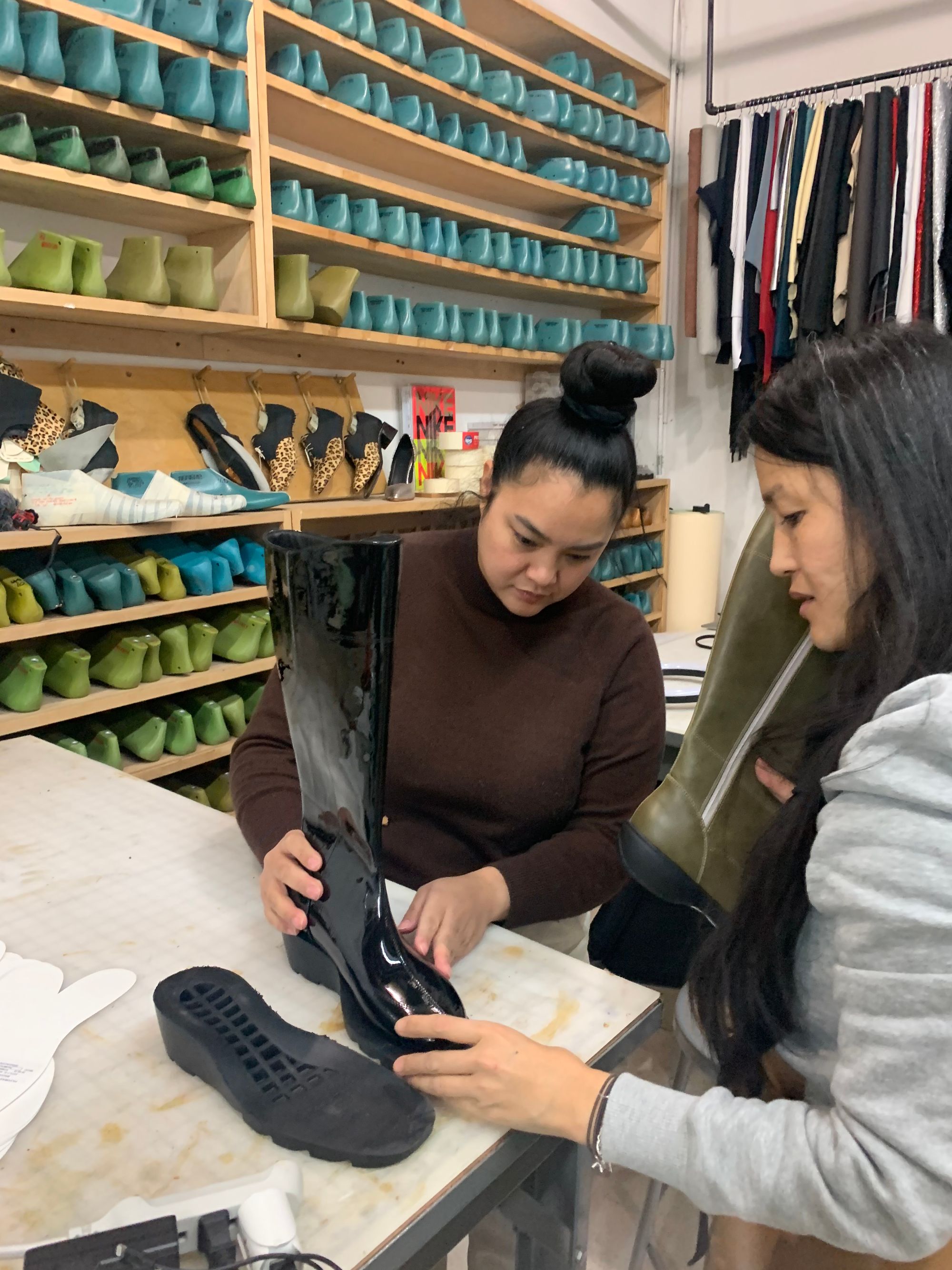
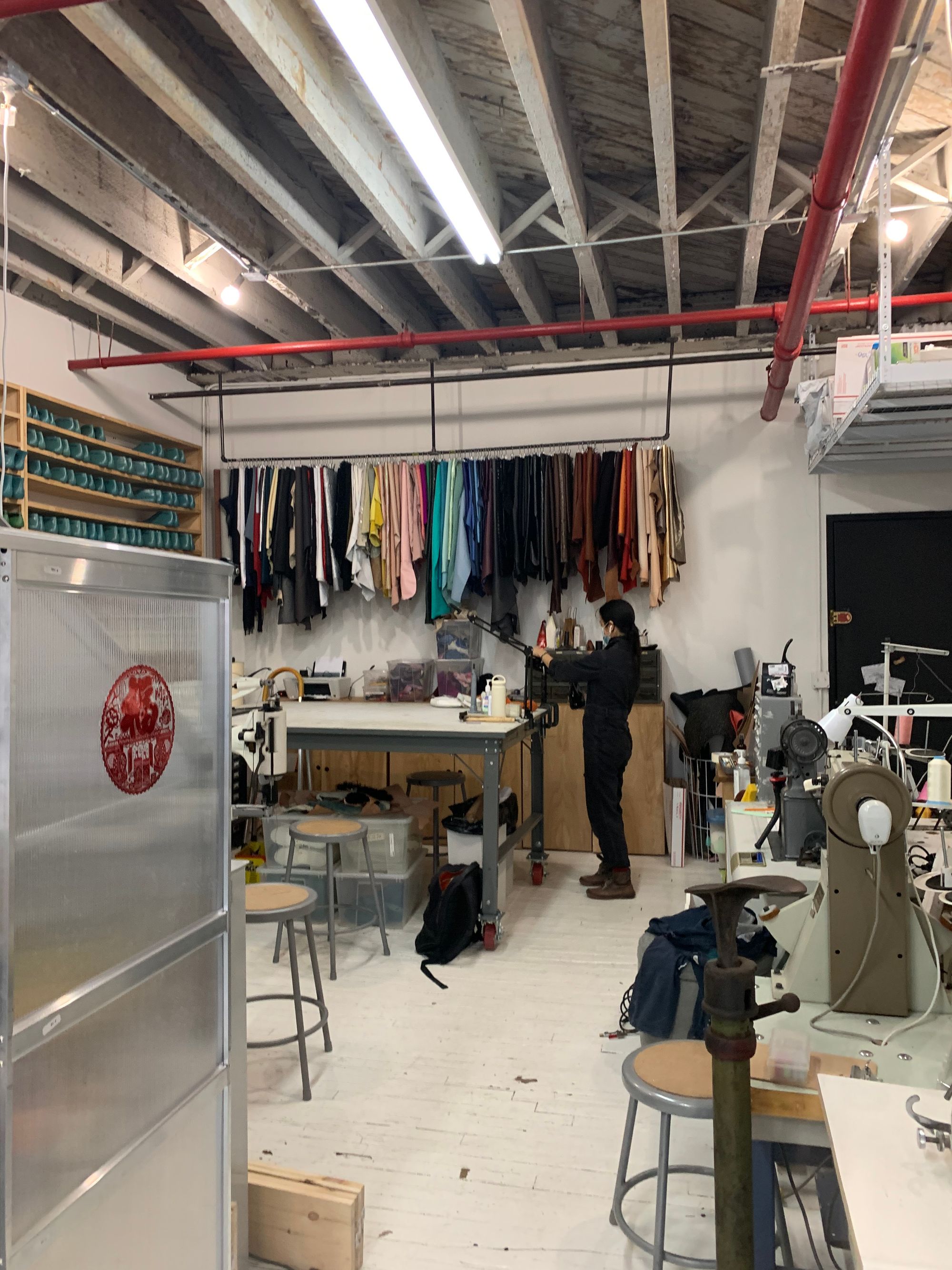

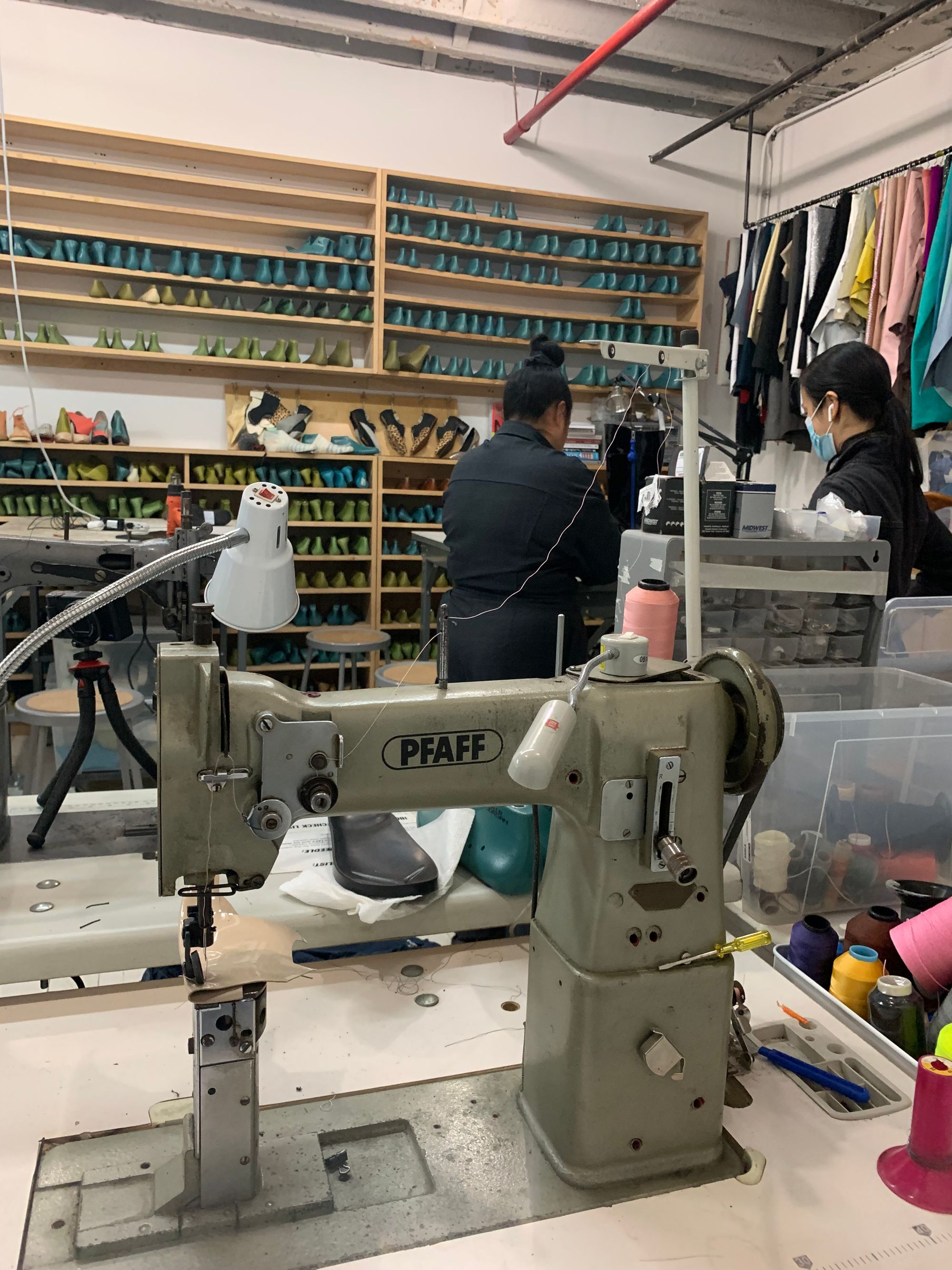
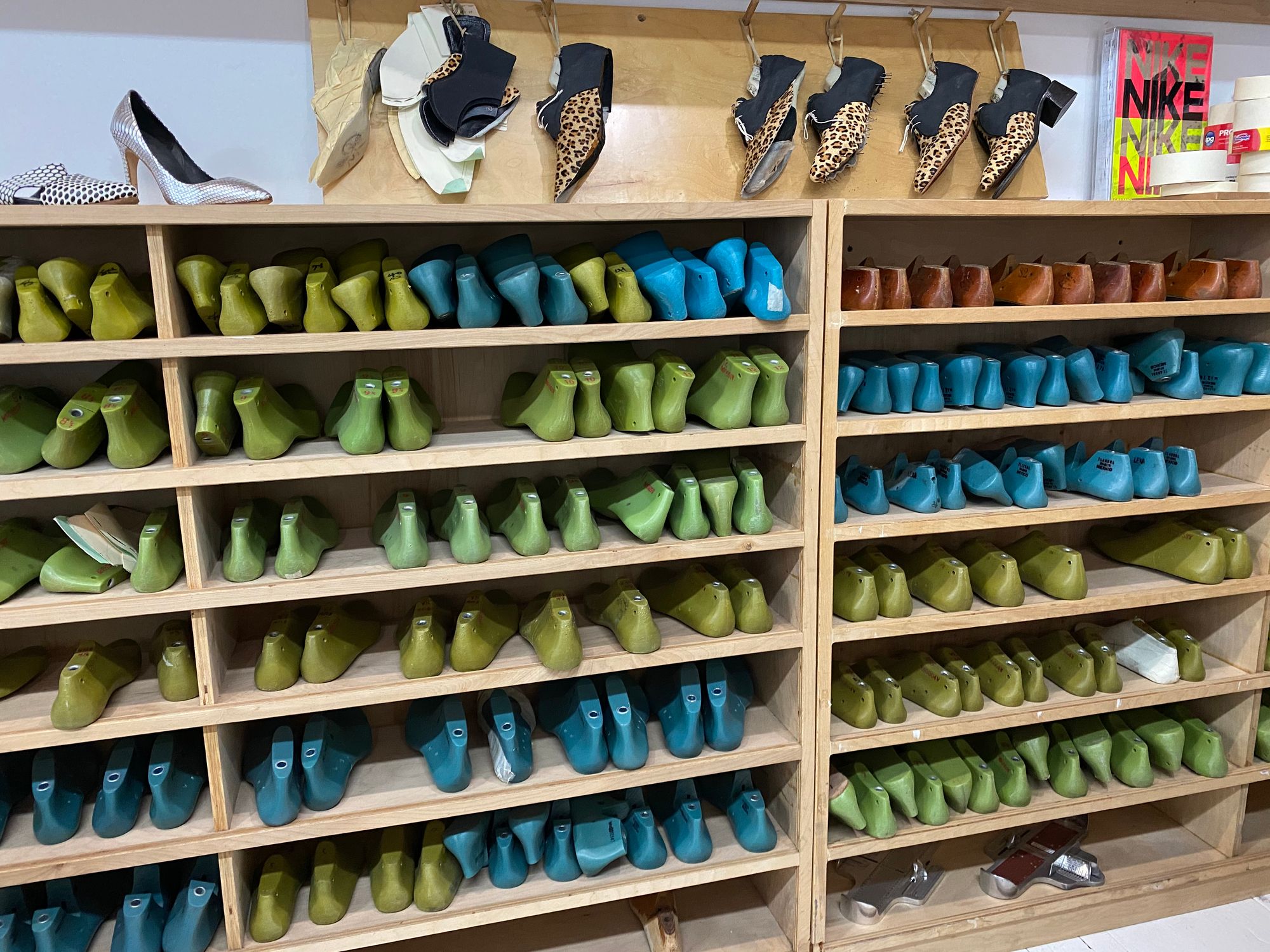
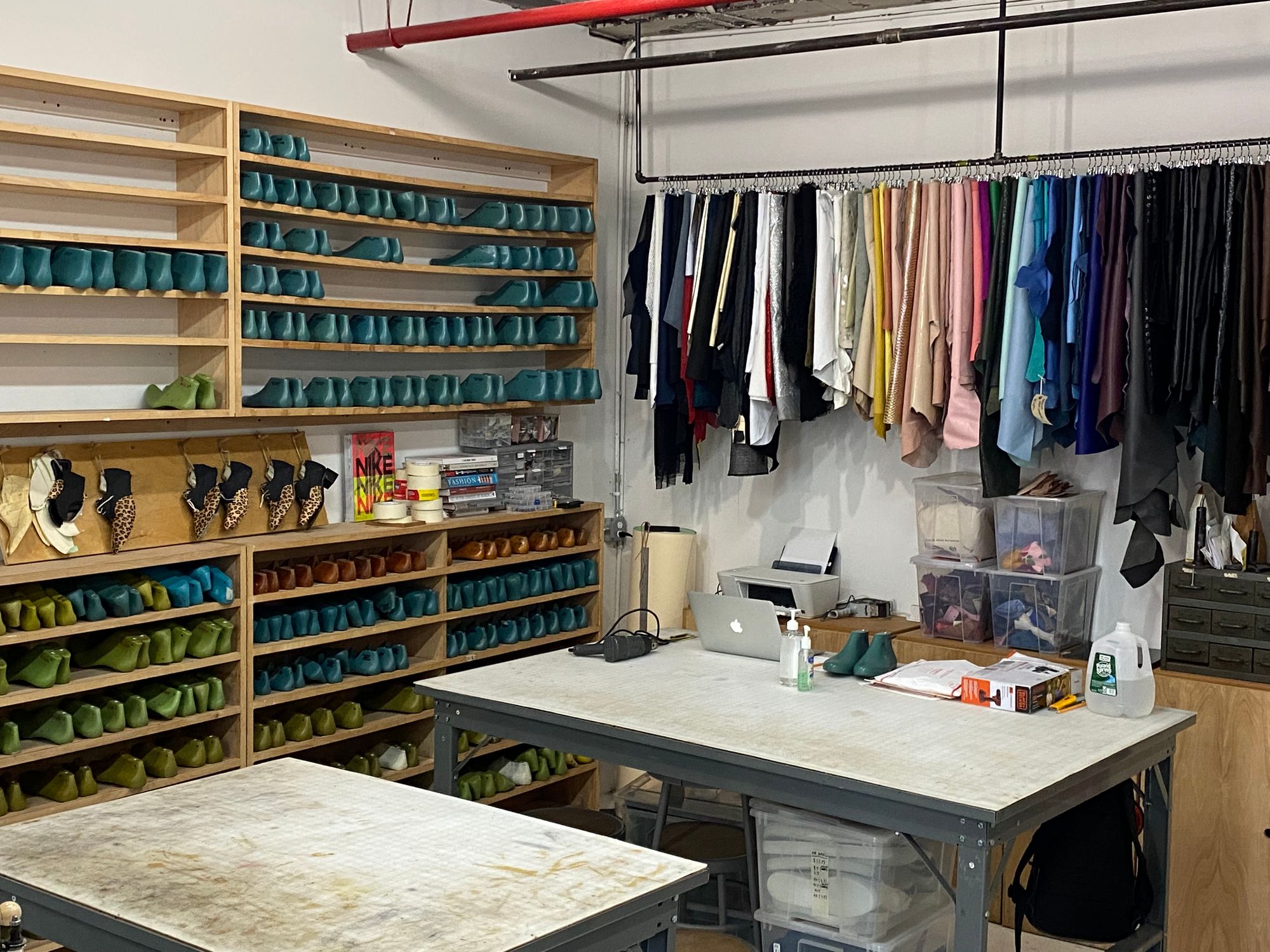
➡️ Behind-the-scenes
Things you didn't read in aw250cs
How did Keiko choose the name of her space?
“I went for very straightforward, easily searchable keywords, specifically for what we do: ‘Brooklyn’, ‘Shoe’ and ‘Space’.”
What Matters When Choosing the Location of Your Space? Many components are at play depending on the concept you wish to bring to life. Something Keiko has experienced firsthand when starting her space: 'My biggest challenge back then was finding the right location and space for the studio, that is priced right for our purpose and a possibility to expand.'
Simply having a space isn't enough. It's essential to have a clear and concise mission in place.
Keiko Hirosue-Korolev, Founder of Brooklyn Shoe Space.
➡️ Brooklyn Shoe Space Today
Where does Brooklyn Shoe Space stand today? This is the exact question we recently asked Keiko, its founder, during our conversation with her. We were curious to understand how COVID-19 has affected her space and community. Running a coworking space is a challenging task, especially one that caters to a niche community. During times of crisis, this task becomes even more difficult. We wanted to learn about the operational challenges Keiko faced. Additionally, as Brooklyn Shoe Space has been in operation for 14 years, we were interested in learning about what has motivated her to continue dedicating herself to such a beautiful craft and concept. Fortunately, you are about to discover the answers to all of these questions below.
💫 Downsizing the space, Strengthening the educational component of Brooklyn Shoe Space.
The pandemic has undoubtedly impacted many operators around the world. But in a city like New York, where rents are high, the impact has been felt even more by operators. So much so that Keiko had to make a move… to something smaller. Keep reading to discover what the transition from one space to another has meant for her and her community.
While size is a limiting factor in the number of people it can bring together at once, having a smaller space also presents new opportunities. Although the coworking room of Brooklyn Shoe Space no longer exists per se, it has made room for another part of Keiko's concept to flourish even more: classes and workshops. What does Brooklyn Shoe Space actually offer to its community post-pandemic? You are about to find out!
💬 I’d like to start by asking you: what’s new at Brooklyn Shoe Space since September 2021? (the month the book was released)
The biggest change for us has been the closure of our coworking space, Brooklyn Shoe Space, located on Roebling Street. It was a street front and storefront that closed its doors in May 2020.
In 2021, shortly after your book was launched, we relocated and reopened in a nearby neighborhood, specifically the East Williamsburg area, after previously being in the South Williamsburg area. We're still within a 15-minute walk from our previous location. However, our studio space is now much smaller, situated in an artist's loft building.
Unfortunately, we no longer offer a coworking space for members to use. Instead, it functions primarily as a classroom space. If anyone wants to use the machines, they reach out to me to coordinate a visit during the times when I am in the office or studio.
💬 Brooklyn Shoe Space has been through a few iterations since you started, where are things at today?
Brooklyn Shoe Space has experienced both expansion and contraction throughout its lifespan, with the changing times and spaces available to us.
Currently, our main offering is classes, with smaller class sizes compared to when we had a larger space. Previously, we were able to host up to 10 students at a time, with the possibility of additional small or private classes taking place simultaneously, and members utilizing the space for work.
However, now our maximum class size is typically limited to four people, occasionally reaching seven to eight people at most, which makes the classes quite full. Despite this, we are actively seeking to invite more teachers, artisans, and artists from various countries to conduct visiting classes, allowing us to maintain a sense of community and cultural exchange. We aspire to foster a communal atmosphere in this manner.
💬 What are the classes currently available at Brooklyn Shoe Space?
Currently, we offer approximately five to six classes per month, ranging from one-day to multi-day workshops. For example, we may have a five-day or three-day class, as well as occasional one-day classes or evening workshops such as our popular wallet-making class.
Additionally, we have introduced classes that utilize swatches and scraps of leather to create smaller leather goods, as we aim to minimize material waste. While these classes may not focus exclusively on shoes, they provide an opportunity for people to casually join us after work and enjoy a creative session over drinks, fostering a relaxed and social atmosphere.
💬 What’s the biggest change you’ve noticed about your members post-pandemic?
One significant change I have observed among our members during the pandemic is that many of them have expanded their operations and set up their own studio spaces. As a result, they have spread out and even moved to other cities. This has resulted in less organic mingling and interaction among makers and artisans in a central studio location.
Now, we need to make intentional efforts to reach out and meet up in person, as social media has its limitations.
Despite these changes, I believe that many makers have actually thrived during the pandemic and continue to pursue their creative endeavors. It's truly inspiring to see their resilience and success in challenging times.
💬 Have you noticed a change in the profile of people who attend your classes, with a potential shift from experienced makers to more first-time shoemakers or beginners?
In our classes, we have seen many first-time shoemakers, especially after the pandemic.
However, prior to the pandemic, there were more travelers from all over the world. Even though there were still some travelers after the pandemic, mostly from within the USA as it was more accessible, such as from Seattle, California, Detroit, Florida, and North Carolina.
So, the majority of our students were domestic travelers.
💬 Why is having a physical space important to your overall mission?
Well, you know, even though we call it a coworking space, it's more like a collaborative makerspace, specifically for shoemakers.
Having a physical space is crucial for fulfilling our overall mission of sharing the love of shoemaking through various related classes. Teaching shoemaking online remotely or virtually is a challenging topic, and while there are online and virtual classes available, and people do thrive in that environment, I personally still prefer to conduct classes in person.
There are limitations, of course, but I value the tangible experience of in-person classes. It provides a dedicated location for creating and helps maintain a separation between my personal and work life. I appreciate having a consistent physical space for conducting classes.
💬 If I remember correctly your story in the book was also a big drive for you when you started lacking space at your house for making shoes.
Oh, yeah, definitely. You don't really need that much space unless you're doing hand-welded shoe-making with lots of hand tools, which takes time and is beautiful. But then you would create dust and some fumes, and it's hard to do that in a small apartment. So that was indeed my initial drive.
💬 You’ve collaborated with different brands over the years, what were they looking for in working with you and your community?
Some are interested in working with us to tap into the community of makers who could potentially become customers for them. Others are interested in the educational aspect and the opportunity to teach their employees or customers about shoemaking.
With Adidas, it was a direct-to-customer event and we assisted in the activation. “Facilitate” might not be the right word, maybe “activated” would be more accurate. We needed a lot of makers to help remake some of the shoes on the spot, so we provided around 15 shoemakers.
💬 So, in every venture that you organize, whether it's with your own brand or partnering with other brands, is there always a tangible outcome for the participants?
The introduction to shoemaking classes typically consists of a quick two-hour session, where the first part is all theory and focuses on measuring your feet. So, you go home with measurements and tracings of your feet.
In other classes, you actually get to make something and go home with a pair of shoes or wallets. It's hands-on and practical, and it's amazing to see what we can create. Yeah, we do make it happen! Amen.
💬 What would you say is the biggest misconception in running a community-driven space for makers?
That’s a great question, It's both easy and challenging, isn't it? In a way, it's not as straightforward as it may seem.
As you may have noticed, it's not just about providing workspace and facilitating groups and events. It's about finding the right balance. It's about the optimal ratio of real estate to the number of members, equipment, services, and communal space. Maintaining a community-driven space requires ongoing communication and relationship-building with members, as well as navigating interpersonal dynamics, managing equipment supply needs, and ensuring a clean and safe environment. And of course, there are financial challenges as we depend on memberships. It's definitely more complex than it appears, and I do think it requires careful consideration.
💬 If you could do one thing differently in the journey of Brooklyn Shoe Space what would it be?
I take great pride in the gradual journey that Brooklyn Shoe Space has taken, including the experience of having a factory for a couple of years before closing it.
However, if I could change reality, I would go back to 15 years ago when I first got the space. At that time, everything seemed to align perfectly, with members and financial status in a different place.
Perhaps I could have secured a larger space, like a warehouse or commercial building, to provide both personal and private spaces for each artisan, as well as communal areas. It would have been beneficial to have more room, as I mentioned earlier about the ratio. Even when we moved into a bigger space, we quickly outgrew it.
If I could do it all over again, I would consider a larger space, so we could have expanded and offer more services to everyone.
➡️ Reflections on building Brooklyn Shoe Space
💬 What has been your biggest learning out of bringing to life AND growing Brooklyn Shoe Space?
Being flexible and adaptable is crucial in dealing with various situations. It's a valuable lesson to learn.
💬 What would be your best advice to someone thinking about opening a maker-type of space?
Simply having a space isn't enough. It's essential to have a clear and concise mission in place. A mission that prioritizes reliable and safe equipment, not necessarily high-end, but of good quality.
Equipment that can withstand frequent use and allows for flexibility and adaptation over time to meet the changing needs of members. It's also crucial to strike the right ratio of real estate, ensuring that there is enough space to accommodate everyone's requirements. So, having adequate space is crucial.
💬 If you could chat with makerspaces now, what would you like to ask them?
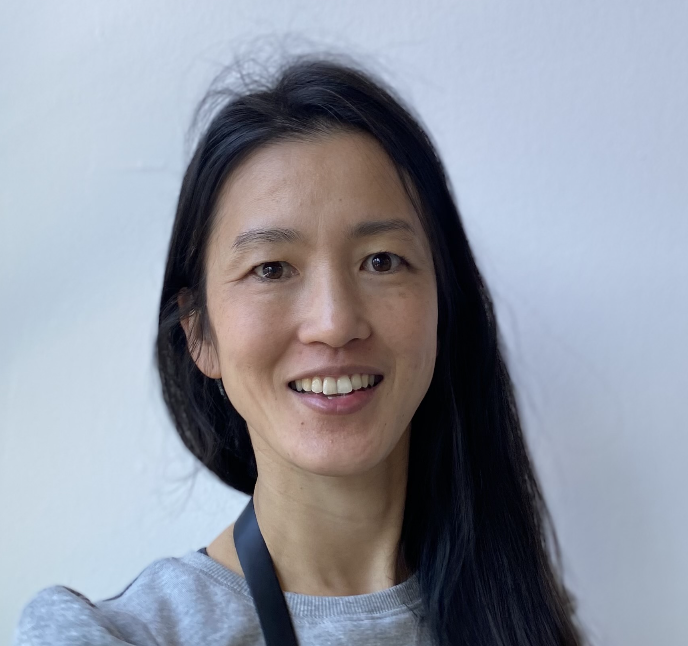
💬 And if you could chat with makerspaces members?
When it comes to makerspaces or coworking spaces, there are some nuances to consider, particularly for makerspaces. It could be valuable to ask potential questions about their experiences with coworking spaces and makerspaces, such as comaker spaces, and how it has influenced their lives or creative practices.
So what impact has it had on your life or creative process?
As a business owner, I'm always eager to learn more about the types of classes and events that our members would like us to offer, and how they would like to engage in various activities.
It's intriguing to explore the reasons why people choose to use a coworking space rather than having their own dedicated space, especially when interacting with members from different parts of the world.
What drove you to become part of this community?
That's also a question I would like to ask.
💬 Last but not least, where do you want to bring Brooklyn Shoe Space next?
Oh, dear. Well, I'm still making slow progress, but one possibility we're considering is expanding our physical space. This would allow us to have individual artisan workspaces separate from the flexible communal space we use for classes. Alternatively, we could transition to offering fully virtual classes on a digital platform and then provide online courses, although that's not our area of expertise. We could also become a visiting traveling shoemaking class that goes to event spaces or other maker spaces across the country and around the world. I've even done shoe talks where I've interviewed shoemakers from different regions. I would love to visit all these event spaces and meet artisans from all over the world, starting from our own space.
Regardless of the format we choose, our mission remains the same: to support shoemakers by providing supplies, information, classes, and events, and by highlighting industry professionals. Staying true to our values and promoting the art of shoemaking will be our focus. We're still uncertain about the exact direction we'll take, but that's what we're working towards.
Join our Community Chat and come discuss the story of Brooklyn Shoe Space with us!

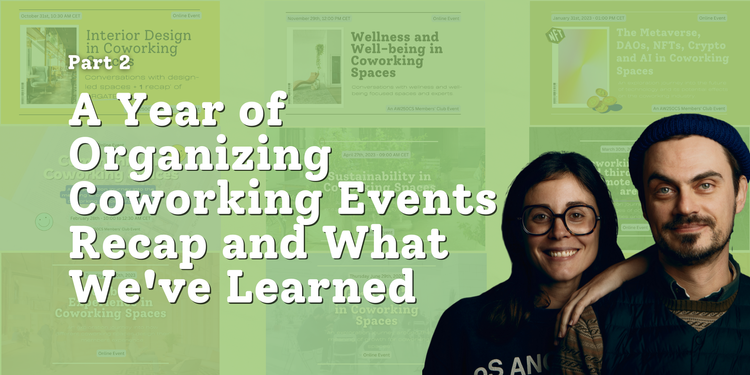




Member discussion